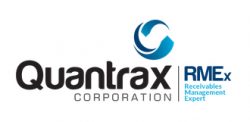
No, the industry has not changed but we have failed to adapt to change and modern technology
Have you wondered why there are mergers and acquisitions changes taking place in the collection software space? Is this good for the ARM industry? In the period leading up to 2000, we enjoyed high fees, the introduction and growth of automated systems and easy access to quality employees. 20 years later, we do more work for less money and our technology expenses have increased without giving us better control of our operations. We hear a simple excuse – things are much more complex and challenging than they were 20 years ago.
Is there anything in the world that has not changed in the last 20 years? What about the collection industry? We did a few basic things 20 years ago – we posted accounts, sent letters, made phone calls, entered payments and remitted money to clients. 20 years later, we have to do exactly the same things. So why do we feel challenged, after these 20 years of experience? It’s simple. We did not evolve. Thirty years ago, we communicated by phone and post office mail. The electronic typewriter allowed us to correct mistakes and store documents. Fast forward to e-mail. Did we simply print our e-mails, put them in paper files and store them in filing cabinets? No. E-mail had quickly evolved into document management, attachments and forwarding.
In the 1980’s the collection industry invested in automation. We replaced the card system, and improved that process over the next 15 years. Most vendors invested in features driven by their clients – users who saw the world through “collection lenses”. Software vendors changed their products to run on new generations of hardware and operating systems, but did not significantly change the way their technology interacted with our people and our processes. Consider Expedia and Uber. Expedia put thousands of travel agents out of work by transforming the way we search for and book our flights, whether they be one-way or multi-city trips. Uber changed the way we hail a taxi, track our ride and pay for it. We enjoyed these new processes and embraced them.
What about the collection industry? Was it transformed by superior technology like the offerings of Expedia and Uber. Far from it. We are today offered a choice of aging, high-end products that have not been significantly enhanced in over at least 10 years. That statement will surely be challenged by every collection software vendor, but we will stand by it for several reasons :
- At least four major vendors (those who could have scaled to over 500 users) have failed to deploy their newest products across any significant percentage of their client base. These products have failed to gain traction or have been withdrawn from the market
- How many collection systems allow an owner to access key management information on their smart phone?
- How many systems allow agents to send a text message to a consumer and get permission to use text messaging? Our banks do it, and so do credit card companies and airlines. Why does the collection software industry force us to live in the 20th century?
- Many years after states have defined special rules and guidelines, is your collection system capable of counting calls and managing call frequency at a client, state and municipality level?
- How many of our systems offer automated features that e-mail reports and remittance statements?
Of course, we conveniently use the excuse that we can not do many of these things because we could be sued. Does anyone reading this believe that using text messaging to notify a consumer that we received their payment, or intend to process a recurring check payment will get them sued? (This would of course be after obtaining the consumer’s documented permission to use text messaging). Of course not! For younger consumers who will only contact us via e-mail or text messaging, why don’t we make it easy for them to do so?
As hard as it may be to accept, the truth is that we have failed to evolve our technology, management styles, automation and processes, to take advantage of the spectacular benefits offered by modern technology. We have not countered the claims of our alleged consumer “abuse” by offering conveniences that will receive praise for outstanding customer service. Like most industries today, collections is a technology-driven process. With weak and dated systems, software companies have made their clients spend lavishly on ongoing maintenance, giving them little to face today’s real challenges. Unlike the Google’s, Microsoft’s and Apple’s, the collection software industry did not reinvest its profits into redesigning and reengineering its products. Shame on them. The ARM companies that realized this, have been forced to spend millions on in-house programming resources, and will always struggle to become “software companies”. The rest of the industry will be forced to spend on new technology, which probably won’t be such a bad thing!
Ranjan Dharmaraja is founder and chief technologist at Quantrax Corporation, a company that created an intelligent collection platform over 20 years ago but “have struggled to get the message to the broad ARM industry”. Self-funded, they have continued to invest in and successfully develop and deploy technology that offers modern solutions to old problems. Quantrax Corporation Inc – www.quantrax.com – (301) 657-2084

